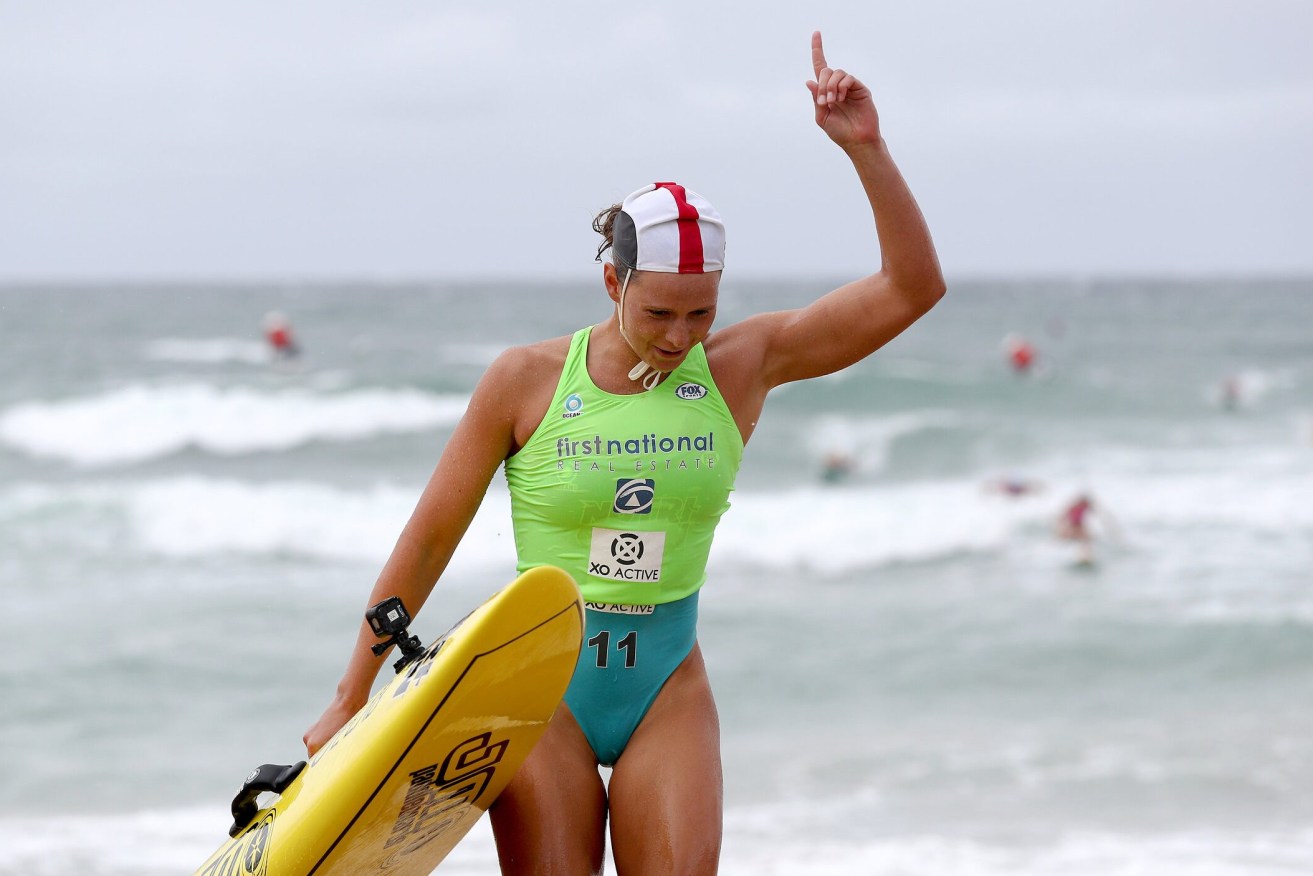Starving for success: How our elite athletes are ‘under-fuelling’ to meet body image
Female and male athletes across Australia, from surf iron champions to top-tier football players, are suffering a wave of crushing body image issues leading to chronic “under-fuelling”, experts and elite sportspeople have revealed.


Name - Ocean6/Nutrigrain Series Location - North Cronulla, NSW Date - 23, 24, 25 Febraury 2017 Image - Shane Myers ©2017 Ocean6
In an attempt to meet a mix of social media ideals and strict athletic tests such as skinfolds, many athletes were failing to eat enough to fuel their bodies to meet the physical demands of training and competition.
World ironwoman champion and exercise physiologist, Harriet Brown, told the Gold Coast Elite Sports Conference on Thursday that the pressure was so great that athletes were turning to “restricted eating” to deal with constant comparisons with other athletes and social media body ideals.
Even the highest profile and most successful athletes were being affected by the body image stress that was piled on from all angles including from coaches, parents and teammates, she said.
“In our sport, we are racing on TV in swimwear. It sometimes can feel overwhelming,” Brown said.
“It’s contributing to issues like restricted eating, the athlete drop-out rate, and athletes’ own self-belief.”
Elite performance nutritionist Ali Miles, who has worked with Australia’s Olympic teams, the Women’s National Basketball League, and the St Kilda and North Melbourne AFL teams, said a growing number of athletes were suffering eating disorders.
“Many athletes are simply not giving their bodies the fuel that they require to endure the training load that they have and then to compete. There’s constant under-fuelling that athletes expose their bodies and brains to,” Miles said.
“This is not just a female issue. While eating disorders are more prevalent amongst females, there are eating disorders prevalent in the male population and with male athletes as well.
“There’s really big issues with under-fuelling and how they perceive their bodies, as well as how others perceive their bodies in a high-performance environment.”
Professional surf athlete Lizzie Welborn, 21, said she had turned to restricted eating because she was scared her body was changing.

Welborn qualified for her first Nutri-Grain Series when she was just 16, making her one of the youngest competitors to ever stand on the starting line for the professional ironwoman series.
“For most of my athletic career I never really questioned body image because I could eat what I wanted and my body never changed,” Welborn said.
“It wasn’t until I turned 20, I hit puberty late and my body was changing a bit later than some other females’ bodies changed. It got to a point where I started looking at myself and didn’t like what I was starting to look like. I didn’t think I looked shredded enough, I didn’t think I looked like an athlete.
“So, I started to constantly have negative thoughts about what my body looked like and I was comparing myself to others. I got into a bad habit of restricted eating. I was thinking about food all day, every day and how it was impacting my body.
“I lost touch with myself. I was very emotional. I wasn’t sleeping well, I was cold all the time, I was temperamental – all the signs of being under-fuelled. But I could put it aside, all because I was racing well.”
Welborn said she chose to restrict her food intake, despite complete 16 intense training sessions a week.
“I wouldn’t eat before training, I’d see how long I could go after training without eating. I had a whole negative mindset and it was so, so consuming,” she said.
“A massive part of it was being an athlete, looking at myself in the mirror and looking at myself in photos and not being happy with what I was seeing.
“I was comparing myself with athletes but also comparing myself to pictures on social media. I decided to see how shredded I could get and a major part of that was restricted eating.”
An independent report into Swimming Australia’s treatment of girls and women released earlier this year urged the peak organisation to make major changes that included managing body image concerns for its swimmers.
Among the changes were bans on skinfold tests and cutting use of the term “physique.”
Among the 46 recommendations, the report also urged Swimming Australia to acknowledge that “the practice of assessing body composition is harmful to swimmers.”
Also this year, Gymnastics Australia released a program called Body Care for athletes in response to evidence of the long-term physical and mental issues that could arise from how bodies were talked about and treated in sport.
And captain of the Australian women’s rugby sevens side, Demi Hayes, has started a campaign to establish strength as the new standard of feminine beauty and the body image ideal for athletes and women..
It comes as many athletes, female and male, continue to be body shamed about their appearance.
Last month, the NRLW’s Brisbane Broncos condemned trolls who targeted key player Julia Robinson with body-shaming comments after a picture of the three-time premiership winner was posted by the club on their social media platforms.
AFLW star Sarah Perkins also won massive social media support when she called out a body-shaming attack on her by an online troll.
Welborn said while many girls and boys had been through greater battles with body image and eating disorders than she had, she believed athletes needed better support to prevent a body image crisis.
“It turned out eating more was beneficial to me, rather than hindering my performance it did help. Now I don’t feel guilty about eating and I think about food less, that’s probably the best thing,” she said.












